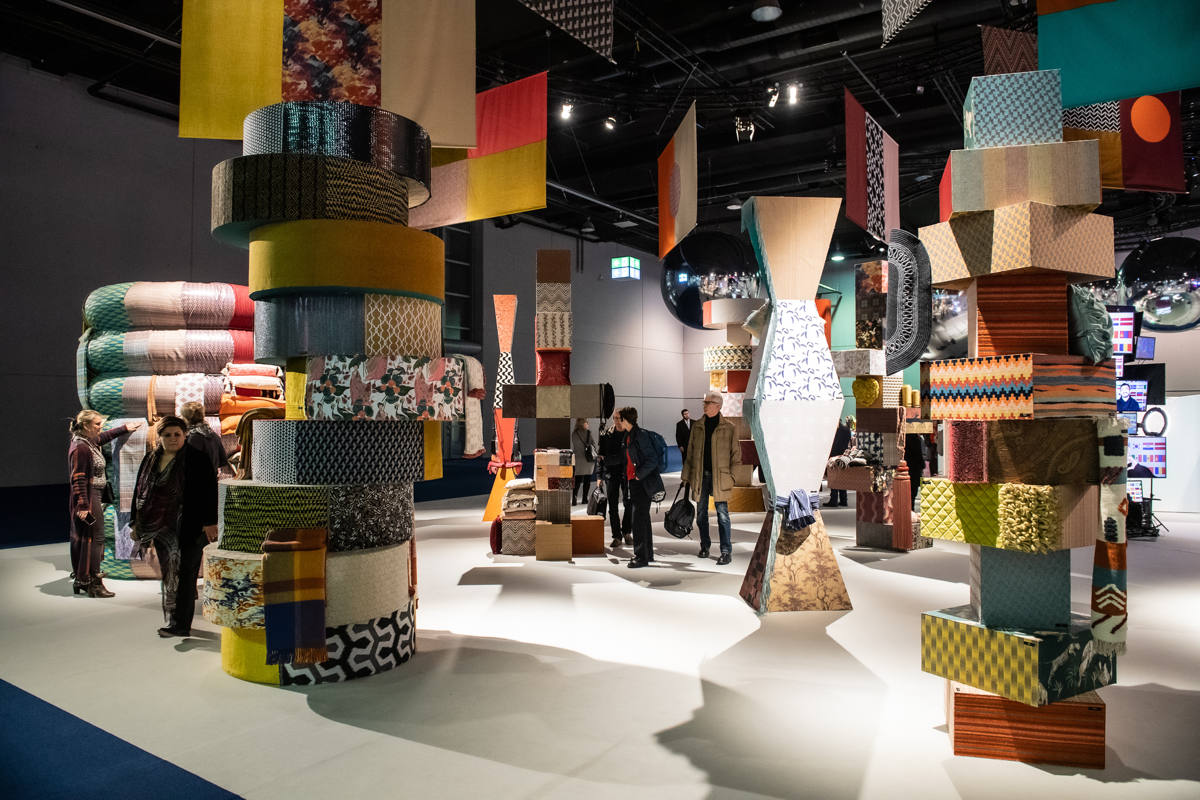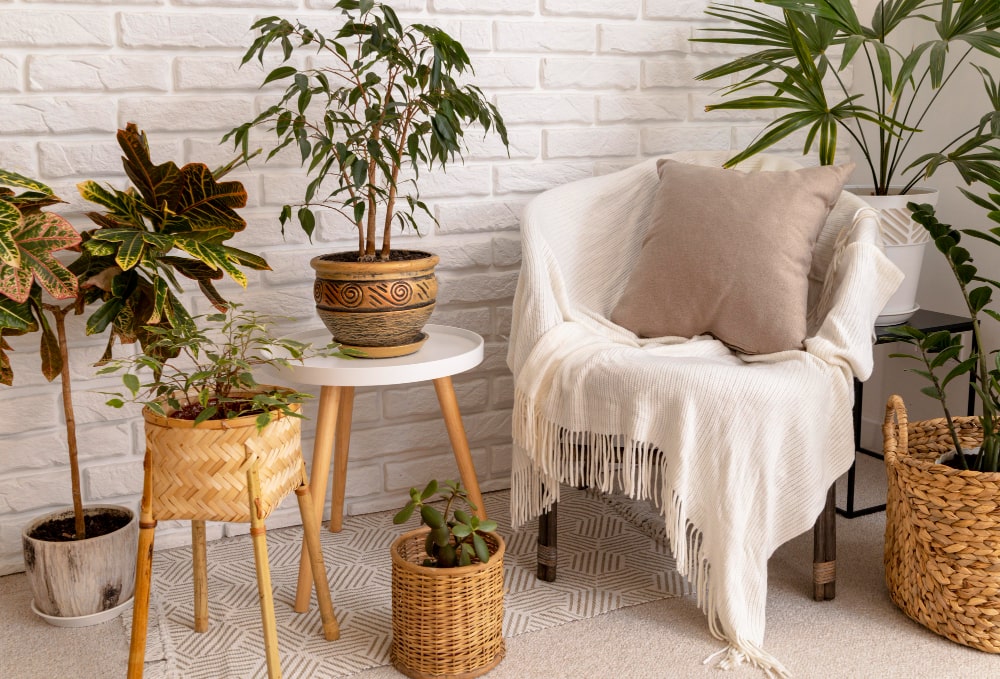Sustainable materials in modern home decor minimize environmental impact and enhance longevity. They embody ethical aesthetics, vital to contemporary eco-conscious trends.
Home decor trends continuously evolve, but the rising awareness of environmental issues has firmly placed sustainable materials at the forefront. Homeowners and designers alike are turning to eco-friendly options not only to reduce their carbon footprint but also to bring a natural, authentic touch to living spaces.
Sustainable materials, such as reclaimed wood, bamboo, cork, and recycled metal, have gained popularity due to their minimal environmental strain and biodegradable nature. Choosing sustainable materials is about making conscious decisions that reflect a commitment to protect our planet. As we face increased environmental threats, incorporating such materials in home decor signifies a crucial shift toward responsibility and innovation. This trend is reshaping the industry, making sustainable choices both a design preference and a moral imperative for a healthier, more sustainable living environment.
Introduction To Sustainable Home Decor
Sustainable materials are key in modern home decor. These materials help protect our Earth. They include items like bamboo, recycled glass, and organic cotton. More people want their homes to be eco-friendly. Designers now use stuff that does not harm the planet. Their goal is to make beautiful spaces that also care for nature.
| Sustainable Material | Source | Eco Benefit |
|---|---|---|
| Bamboo | Fast-growing plant | Needs little water and no pesticides |
| Recycled Glass | Old bottles and jars | Reduces landfill waste |
| Organic Cotton | Chemical-free cotton farms | Uses less water and no toxic chemicals |
Environmental Impact Of Conventional Home Decor Materials
The production of non-sustainable home decor materials consumes vast resources. Such materials often involve the extraction of non-renewable resources, leading to ecosystem damage and pollution. During use, they can release harmful compounds, compromising indoor air quality and human health.
Considering the lifecycle of decor items reveals further issues. Once discarded, non-sustainable items may take centuries to decompose, polluting the soil and water. By contrast, sustainable materials are often biodegradable, reducing long-term environmental harm.
Sustainable Materials And Their Benefits
Natural fibers, like cotton, wool, and linen, are key in modern home decor. These materials are not only eco-friendly, but also add a touch of nature to interiors. Each fiber comes with its unique benefits — cotton is soft and versatile, wool is durable and warm, and linen is breathable and elegant. They all support a healthy environment by being biodegradable.
Reclaimed wood brings character and a vintage charm to homes. Its use ensures less tree cutting and reduces waste. The wood, with its distinct marks and history, tells a story and adds a rugged beauty to furniture and decor. Each piece is one-of-a-kind, offering a blend of luxury and sustainability.
Green Certification And What It Means For Materials
Certifications like FSC and LEED reveal the eco-friendliness of materials. Knowing these badges helps us pick sustainable home decor. The Forest Stewardship Council (FSC) checks if wood comes from well-managed forests. Leadership in Energy and Environmental Design (LEED) measures a building’s overall green footprint.
These labels sway buyer choices towards earth-friendly options. People trust these certifications. They show commitment to planet care. This trust shapes buying habits. Shoppers look for these marks when choosing decor. Green badges signal quality and care for our home, Earth.
Advancements In Sustainable Fabrication Methods
The world of home decor is embracing sustainable materials like never before. Innovations have paved the way for creating home furnishings using eco-friendly methods.
3D printing technology now utilizes materials that are kind to our planet. This includes biodegradable filaments made from plant-based sources. Designers are crafting intricate and stylish pieces without harming the environment.
Recycling has taken a creative turn in the realm of interior design. One sees the use of upcycled glass and plastics to produce decorative objects and functional furniture. These practices show commitment to sustainability. They change how we decorate our living spaces.

Credit: luxiders.com
Incorporating Sustainable Materials Into Home Decor
Sustainable materials are key for eco-friendly home decor. Choose items like bamboo, recycled glass, and reclaimed wood to ensure both style and environmental care. Exploring successful sustainable décor projects reveals the creative use of materials like cork and natural fibers. These elements bring a unique aesthetic to any space.
- Use bamboo for furniture and flooring
- Decorate with recycled glass accents
- Opt for reclaimed wood pieces
- Select textiles made from organic cotton or linen
Local artisans often craft pieces that highlight the beauty of reused and sustainable substances. By carefully selecting decor, one ensures a home that looks good and feels right.
| Project | Materials Used | Impact |
|---|---|---|
| Eco-Friendly Living Room | Bamboo, Organic Cotton | Reduced Carbon Footprint |
| Green Kitchen Remodel | Recycled Glass, Reclaimed Wood | Waste Reduction |
| Artisanal Bedroom Accents | Cork, Natural Fibers | Supports Local Economy |
Longevity And Lifecycle Of Sustainable Decor Items
Understanding sustainable materials is key in modern home decor. These materials must endure daily use. Often, eco-friendly products are as durable as conventional ones. Designers are now focusing on long-lasting, recyclable materials. Items like bamboo furniture and recycled metal accents offer both style and sustainability.
When decor reaches its end of life, eco-conscious options exist. Materials such as cork and reclaimed wood can be recycled. Many companies specialize in deconstructing items for parts reuse. The rest can often go back to nature, decomposing without harming the environment. These efforts contribute to reducing waste in landfills.

Credit: venngage.com
Cost Analysis: Sustainable Vs. Traditional Decor Materials
The debate on sustainable materials versus traditional ones is ongoing. The initial cost of eco-friendly options can be higher. Long-term savings and environmental benefits often balance this out. People believe green materials cost much. But they save you money over time. Seeking alternatives like bamboo, cork, or recycled glass is wise. These are not only stylish but also durable and renewable.
Budget-friendly tips include using reclaimed wood for a rustic charm. Shop for second-hand decor to reduce waste. Try DIY projects with items at home. Use native plants for a green space and clean air. Opt for LED lighting which lasts longer. All these can beautify your home and protect the planet.
Challenges And Barriers To Adopting Sustainable Materials
Adopting sustainable materials in home decor faces unique challenges. Market availability often limits choices for consumers. Sustainable products may be hard to find or have higher prices. This impacts the decision-making process for buyers steering towards conventional options due to cost and accessibility concerns.
Addressing consumer mindset is another hurdle. There is a common belief that recycled materials lack quality or aesthetic appeal. Many assume these materials are less durable or not as stylish. Education is key to change these misconceptions. By showcasing the durability and design potential of eco-friendly options, prejudices can be shifted towards a positive outlook.

Credit: venngage.com
The Future Of Home Decor With Sustainable Materials
Sustainable materials are transforming home decor. Eco-friendly choices are now a priority for consumers. People want their homes to reflect a commitment to the environment. The market has responded with an influx of green products.
Technology and innovation play key roles in this shift. Cutting-edge techniques in material production reduce waste. They also use less energy. Smart home technology integrates with sustainable materials. This creates homes that are both modern and eco-conscious. Furniture made from recycled plastics and reclaimed wood is popular. These materials were once discarded, but now they are valued.
Frequently Asked Questions Of The Role Of Sustainable Materials In Modern Home Decor
Why Are Sustainable Materials Important In Interior Design?
Sustainable materials reduce environmental impact and support eco-friendly living. They promote health, longevity, and can lower energy costs, making them vital for responsible interior design.
How Has Sustainability Affected Interior Design?
Sustainability in interior design has led to eco-friendly materials and practices becoming more prevalent. Designers often opt for renewable resources, energy-saving solutions, and low-impact furnishings. This shift supports environmental conservation and promotes healthier living spaces.
What Is The Importance Of Material Sustainability?
Material sustainability is crucial for conserving natural resources, reducing waste, and minimizing environmental impact. It supports long-term ecological balance and promotes responsible production and consumption.
Conclusion
Embracing sustainable materials transforms home decor from mere aesthetics to a statement of environmental advocacy. Short-lived trends make way for enduring style and eco-responsibility. We all play a pivotal role. By choosing eco-friendly options, each household contributes to a greener planet.
Homes become havens of sustainability, mirroring our collective commitment to the earth’s future.



